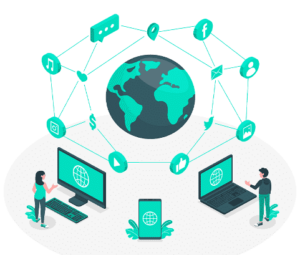Customers expect to rapidly share perspectives digitally – and have those inputs visibly better offerings. Meeting rising expectations challenges legacy feedback methods. But blending online systems with emerging technologies now propels management capabilities years ahead.
This article explores innovations in feedback analytics, delivery platforms, automation and intelligence that promise to transform customer-centricity.
Limitations of Traditional Feedback Channels
Companies historically rely on infrequent surveys, basic comment cards and one-off interviews to understand customers. At best, these dated tactics garner fragmented input lacking scale and continuity needed to guide decisions. Key downsides involve:
Narrow Data – Minimal responses from limited outreach restrict insights to small samples.
Siloed Access – Stakeholder accessconcentrated within certain groups, preventing enterprise-wide visibility.
Delayed Actionability – Manual analysis and distribution bottlenecks throttle application of learnings.
Thankfully continuous innovation in underlying feedback infrastructure accelerates evolution.
The Core Technologies Advancing Feedback
Four technology categories point toward the future of management:
-
Smarter Platforms
-
Automated Delivery
-
AI-Powered Analytics
-
Expansive Integration
Combined they alleviate historical frictions to understanding customers, driving immense intelligence value from feedback.
Smarter Platforms
Configurable online systems like Qualtrics and Medallia consolidate feedback gathering, analysis and data connections in one place. Cloud hosting enables intuitive access across the organizations instead of limited desktop software. And optimized UI including robust mobile support simplify intake at scale.
Automated Delivery
Emerging communication platforms integrated with feedback management system reach customers wherever they are. Intelligent chatbot polling through messaging apps saves effort. Dynamic Landing pages also grab insights from website visitors. And smart voice assistants enable conversational feedback via AI-powered calls.
AI-Powered Analytics
Once feedback is collected, machine learning extracts deeper meaning than manual review possible. Natural language processing determines sentiment context. Intent analysis identifies purchase drivers and delighters. Granular customer clustering also informs hyper-personalization.
Expansive Integration
Connecting feedback hubs with surrounding CRM, marketing automation and business intelligence stack synthesizes disparate data streams. This fuel 360 insights and triggers downstream workflows based on trends.
Combined, these future-looking capabilities wring powerful discoveries from customer input to guide decisions.
Use Case Results: Retail Banking
Let’s spot the transformation through a retail banking lens. Emerging feedback advancements help identify at-risk accounts and personalize offers:
Smarter Platforms provide managers a consolidated dashboard synthesizing satisfaction metrics, transaction patterns and relationship benchmarking. Risk warnings trigger targeted surveys to uncover root causes.
Automated Delivery instantly pushes in-app beacon surveys to clients entering at-risk states. AI call bots also request feedback when early churn signals emerge.
AI-Powered Analytics interprets unstructured verbatim identifying emotional drivers and life events impacting engagement. Predictions prescribe remediation actions for high-churn-risk accounts.
Expansive Integration layers analytical findings into CRM records to guide personalized communications matching individual situation needs.
Through future tech, banks draw comprehensive insights to retain customers – rather than losing them to routine attrition.
Conclusion
Today’s rapidly digitizing customer engagement landscape demands equally modernized feedback capabilities. Siloed, inertia-ridden systems no longer cut it. Introducing smarter platforms, automated delivery, AI and expansive connectivity accelerates the maturity cycle.
This new technology stack diversifies input channels, amplifies findings through smart processing and streamlines applying insights across the business. Ultimately next-gen advancements help organizations see each customer clearly – then treat them as one.
How are analytics improving for unstructured feedback?
Natural language processing, semantic clustering, predictive modeling, named entity recognition, sentiment scoring and other AI techniques help structure meaning.
What emerging technologies show highest ROI potential?
Automated delivery like chatbots and voice assistants promise immense cost and scale efficiencies collecting feedback 24/7/365.
How can feedback systems better integrate across business software?
Open API architecture enables connecting new data inputs, embedding insights across tools, and building workflows around trends.
What future opportunities remain largely untapped?
As technology expands reach across channels, increased feedback volume and intelligence unlocks commensurate opportunities to strengthen customer relationships.
What risks accompany increasing feedback system sophistication?
Overreliance on analytics without human oversight of data interpretation, complex interfaces challenging user adoption, and overburdening customers with excessive outreach.

















